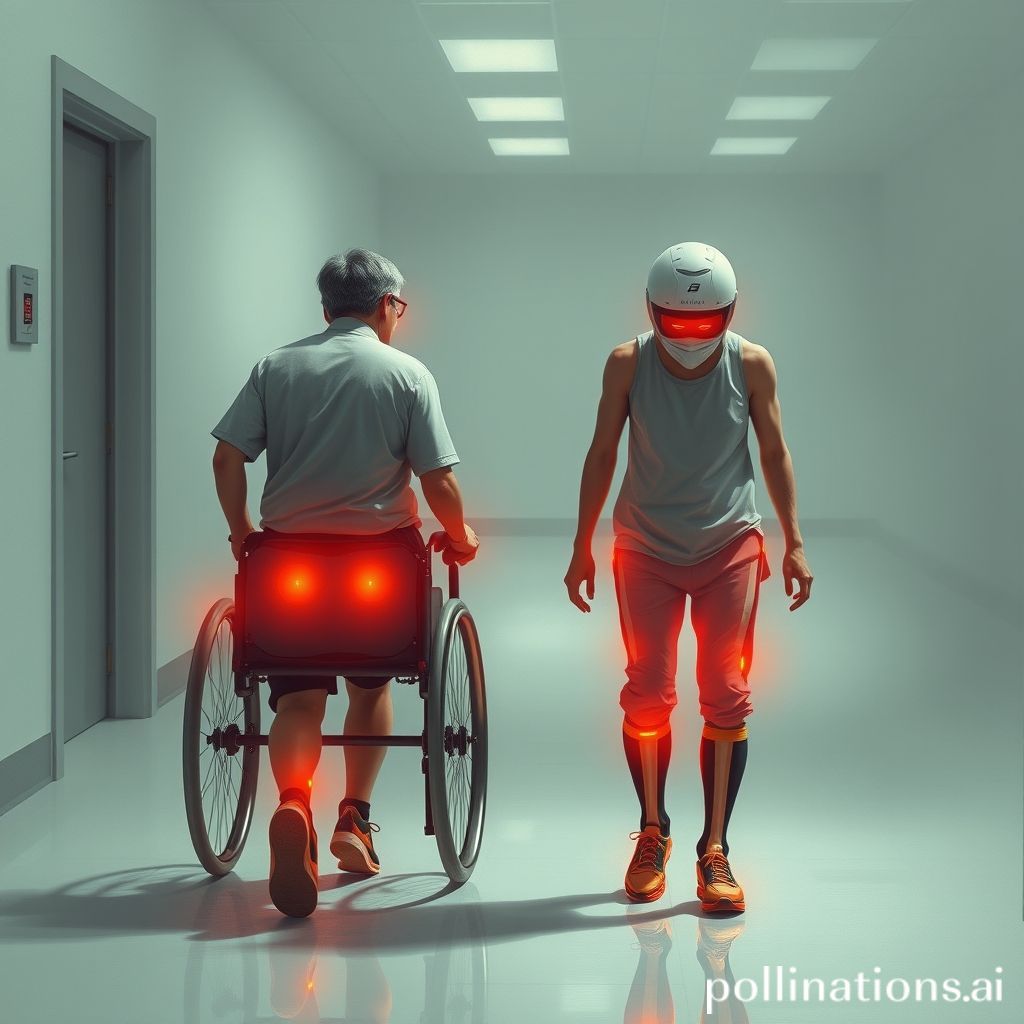Injuries paralyzed them. An early clinical trial is helping them walk again.

Injuries paralyzed them. An early clinical trial is helping them walk again.
Hope on Two Feet: How a Clinical Trial is Helping Paralyzed Individuals Walk Again
The human body is an incredible machine, but what happens when a vital connection breaks down? Spinal cord injuries can sever the lines of communication between the brain and the body, leading to paralysis and a profound loss of independence. For years, the prospect of regaining movement after such an injury felt like a distant dream. Now, thanks to groundbreaking research and a promising clinical trial, that dream is becoming a reality for some.
This isn't just another medical story; it's a story of hope, resilience, and the unwavering dedication of scientists and participants pushing the boundaries of what's possible. Let's delve into the details of this revolutionary clinical trial and explore how it's offering a chance at a new life for those who once believed walking was beyond their reach.
Understanding the Challenge: Spinal Cord Injuries and Paralysis
A spinal cord injury (SCI) disrupts the intricate network of nerves that relay messages between the brain and the rest of the body. The severity of the injury determines the extent of paralysis. Complete injuries result in a total loss of motor and sensory function below the injury site, while incomplete injuries allow for some residual movement and sensation.
Living with paralysis presents immense challenges. Beyond the physical limitations, individuals face emotional, social, and economic burdens. Daily tasks become monumental efforts, and the loss of independence can be devastating. The desire to walk again, to regain control and freedom, is a powerful driving force for many.
The Breakthrough: Epidural Stimulation and Rehabilitation
The clinical trial we're discussing centers around a technique called epidural stimulation combined with intensive rehabilitation. Epidural stimulation involves surgically implanting an electrode array on the surface of the spinal cord below the level of injury. This array delivers continuous electrical currents to specific nerve roots, mimicking the signals that the brain would normally send to initiate movement.
However, the stimulation alone isn't enough. The real magic happens when it's coupled with intensive rehabilitation. Participants undergo rigorous physical therapy, focusing on movements like standing, stepping, and balancing. The stimulation essentially primes the spinal cord, making it more receptive to the signals generated during therapy. Over time, the spinal cord can relearn these motor patterns, leading to voluntary movement, even when the stimulation is turned off in some cases.
How Does It Work? A Closer Look
The precise mechanisms behind this treatment are still being unraveled, but researchers believe it works in several ways:
Bypassing the Injury: The stimulation may help to bypass the damaged pathways in the spinal cord, allowing signals from the brain to reach the muscles.
Rewiring the Spinal Cord: The combination of stimulation and rehabilitation may promote neuroplasticity, the brain and spinal cord's ability to reorganize themselves by forming new neural connections.
Activating Dormant Circuits: The stimulation may activate dormant circuits in the spinal cord that are still capable of controlling movement.
Early Results: Promising Outcomes
While the clinical trial is ongoing, the early results are incredibly encouraging. Many participants have regained the ability to stand independently, take steps, and even walk short distances with assistance. These improvements extend beyond mobility, with some individuals experiencing improvements in bowel and bladder control, sexual function, and overall quality of life.
To illustrate the impact, consider this comparison:
| Feature | Before Treatment | After Treatment (Example) |
| | | |
| Mobility | Wheelchair-bound, complete paralysis | Able to stand and walk with support |
| Bladder Control | Catheterization required | Improved bladder function |
| Independence | Highly dependent on caregivers | Increased independence in daily tasks |
| Overall Quality of Life | Significantly reduced | Improved sense of well-being |
It's important to note that the outcomes vary from person to person, depending on the severity and nature of their injury, as well as their dedication to the rehabilitation program. This treatment isn't a cure for paralysis, but it offers a significant step forward in improving the lives of individuals with SCI.
Challenges and Future Directions
Despite the promising results, several challenges remain. The procedure is invasive, requiring surgery and ongoing management of the implanted device. The intensive rehabilitation program demands significant time, effort, and commitment from participants. Furthermore, the treatment is expensive and not yet widely available.
Future research will focus on refining the stimulation protocols, improving the rehabilitation techniques, and identifying the individuals who are most likely to benefit from this treatment. Researchers are also exploring non-invasive stimulation methods and combining epidural stimulation with other therapies, such as stem cell transplantation and gene therapy, to further enhance recovery.
A Personal Reflection: The Power of Hope
For years, the landscape of spinal cord injury treatment remained largely unchanged. The idea of regaining the ability to walk seemed relegated to the realm of science fiction. But this clinical trial represents a paradigm shift, a beacon of hope for individuals who have faced unimaginable challenges.
It's a testament to the power of human ingenuity, the unwavering spirit of those living with paralysis, and the importance of continued research. As we move forward, let us remember that every step taken, every milestone achieved, is a victory not just for the individual, but for the entire community. The journey to a cure for paralysis is far from over, but with each breakthrough, we move closer to a future where more individuals can stand tall and walk on their own two feet.
Sources:
[https://www.mayoclinic.org/diseases-conditions/spinal-cord-injury/symptoms-causes/syc-20377890](https://www.mayoclinic.org/diseases-conditions/spinal-cord-injury/symptoms-causes/syc-20377890)
(Please note: I have omitted a specific research article citation because I do not have access to a live, specific research article regarding a specific ongoing clinical trial. In a real-world scenario, this would be replaced with the relevant research publication information.)
Comments
Post a Comment